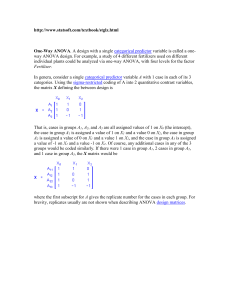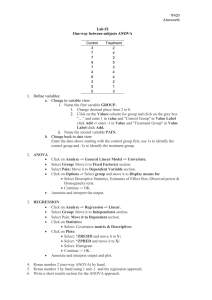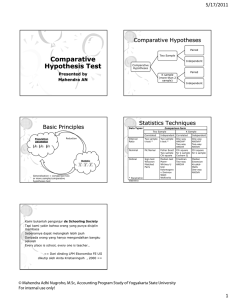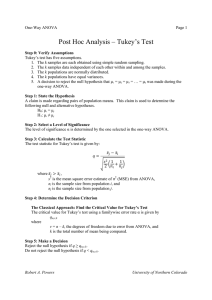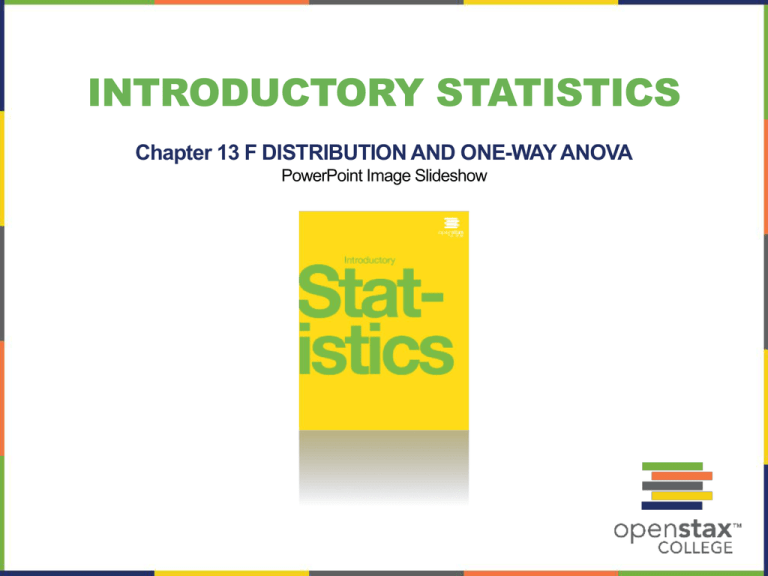
INTRODUCTORY STATISTICS
Chapter 13 F DISTRIBUTION AND ONE-WAY ANOVA
PowerPoint Image Slideshow
SEC. 13.4: F-DISTRIBUTION AND ONE-WAY ANOVA
The purpose of a one-way ANOVA test is to determine the existence
of a statistically significant difference among several group means.
The distribution used for the hypothesis test is a new one. It is called
the F distribution, named after Sir Ronald Fisher, an English
statistician.
NULL AND ALTERNATIVE HYPOTHESES
The null hypothesis is simply that all the group population means are
the same. The alternative hypothesis is that at least one pair of means
is different. For example, if there are k groups:
H0: μ1 = μ2 = μ3 = ... = μk
Ha: At least two of the group means μ1, μ2, μ3, ..., μk are not equal.
NULL AND ALTERNATIVE HYPOTHESES
(a) H0 is true. All means are the same;
the differences are due to random
variation.
(b) H0 is not true. All means are not the
same; the differences are too large to be
due to random variation.
DEGREES OF FREEDOM
The F statistic is a ratio (a fraction). There are two sets of degrees of
freedom; one for the numerator and one for the denominator.
Df(numerator) = (the number of groups) -1
Df(denominator)= (sample size) – (number of groups)
For example, if F follows an F distribution and the number of degrees
of freedom for the numerator is four, and the number of degrees of
freedom for the denominator is ten, then F ~ F4,10.
EXAMPLES OF THE GRAPH
The graph of the F-distribution depends upon the degrees of freedom.
USING YOUR CALCULATOR
Enter your data into 𝐿1 , 𝐿2 , 𝐿3,…
In Stats, Tests, choose ANOVA(
Enter what lists you have data entered in so it looks like:
ANOVA(𝐿1 , 𝐿2 , 𝐿3,… )
Look for the F-statistic, p-value and degrees of freedom.
EXAMPLE
Conduct a one-way ANOVA test to determine if the mean driving times
are statistically the same or different at the 5% significance level.
EXAMPLE
Conduct a one-way ANOVA test to determine if the mean ages
teenagers get their licences are statistically the same or different at
the 10% significance level.
This PowerPoint file is copyright 2011-2015, Rice University. All
Rights Reserved.

